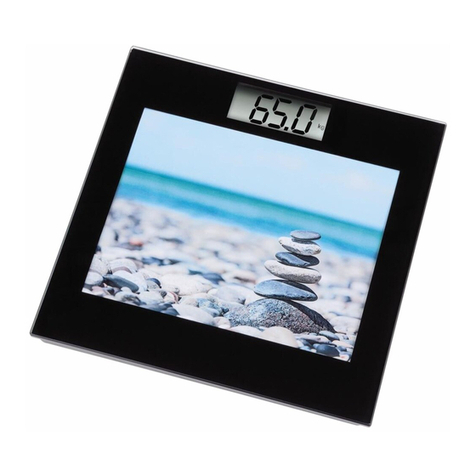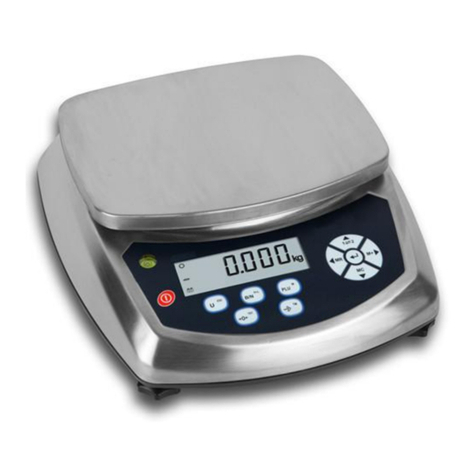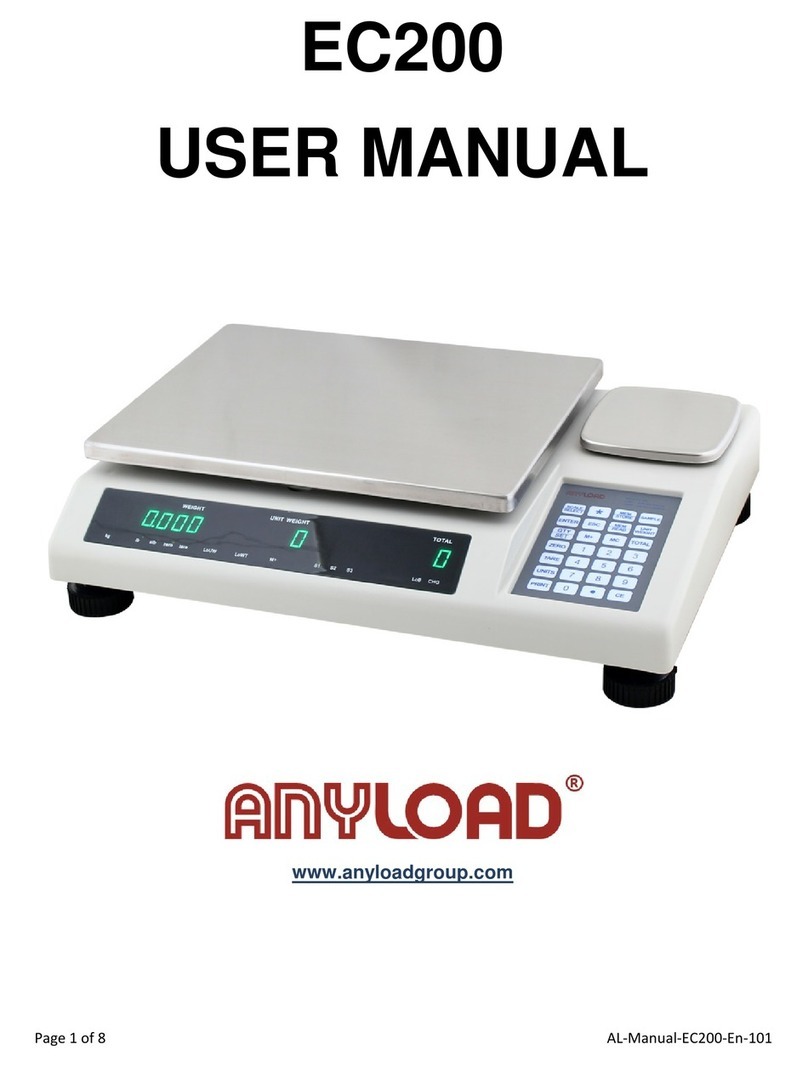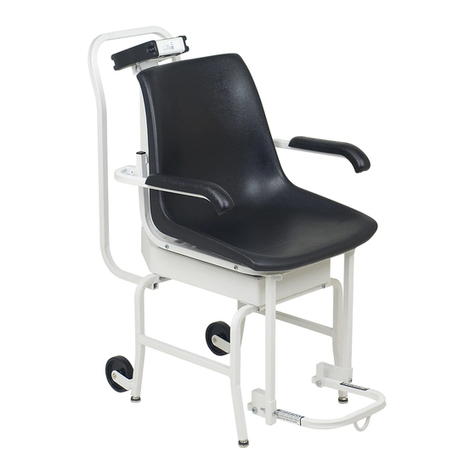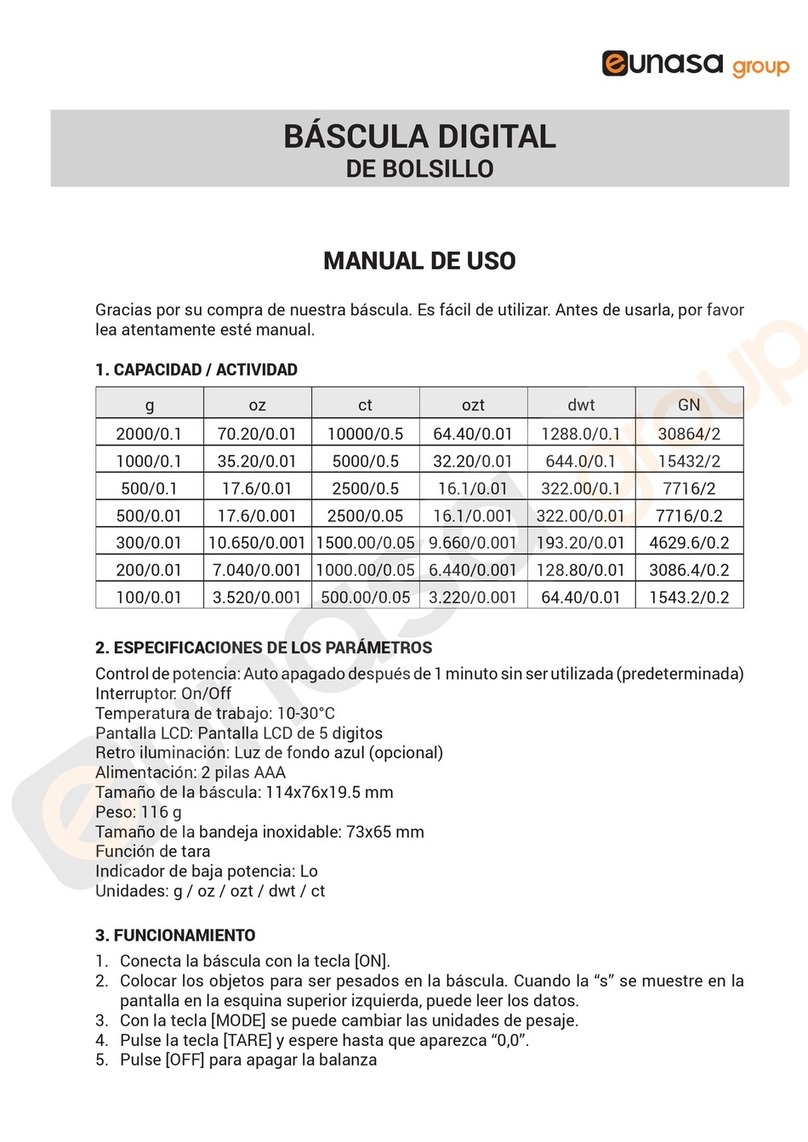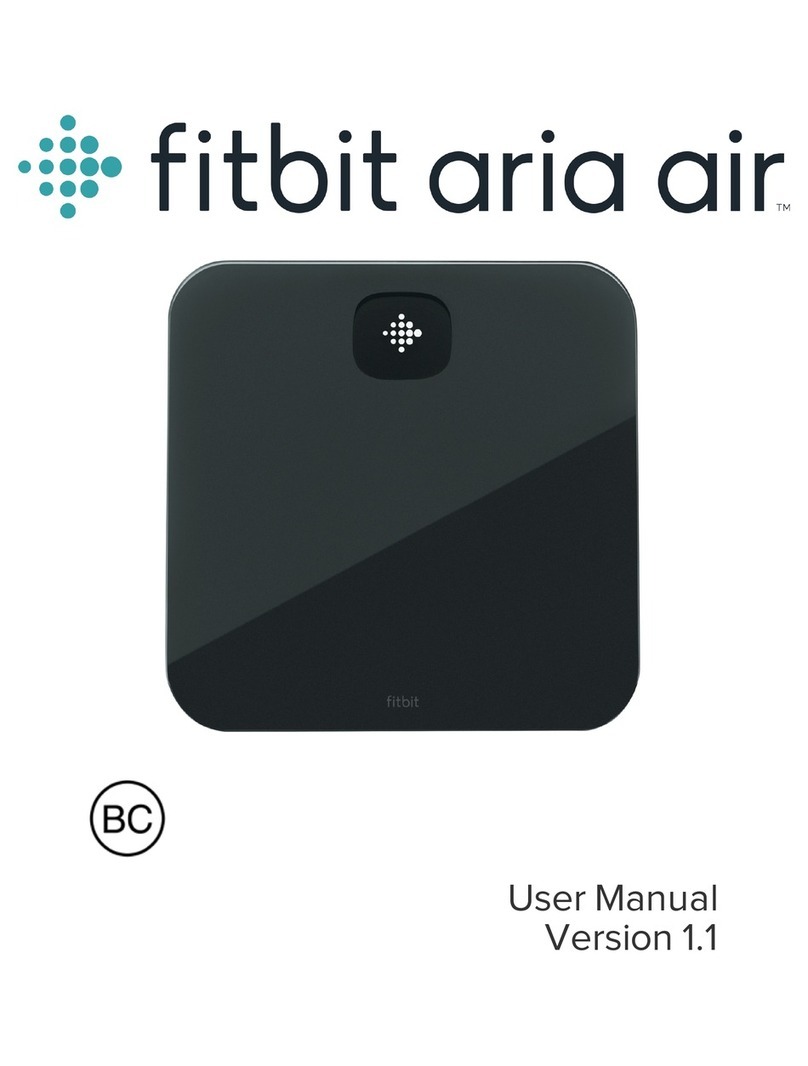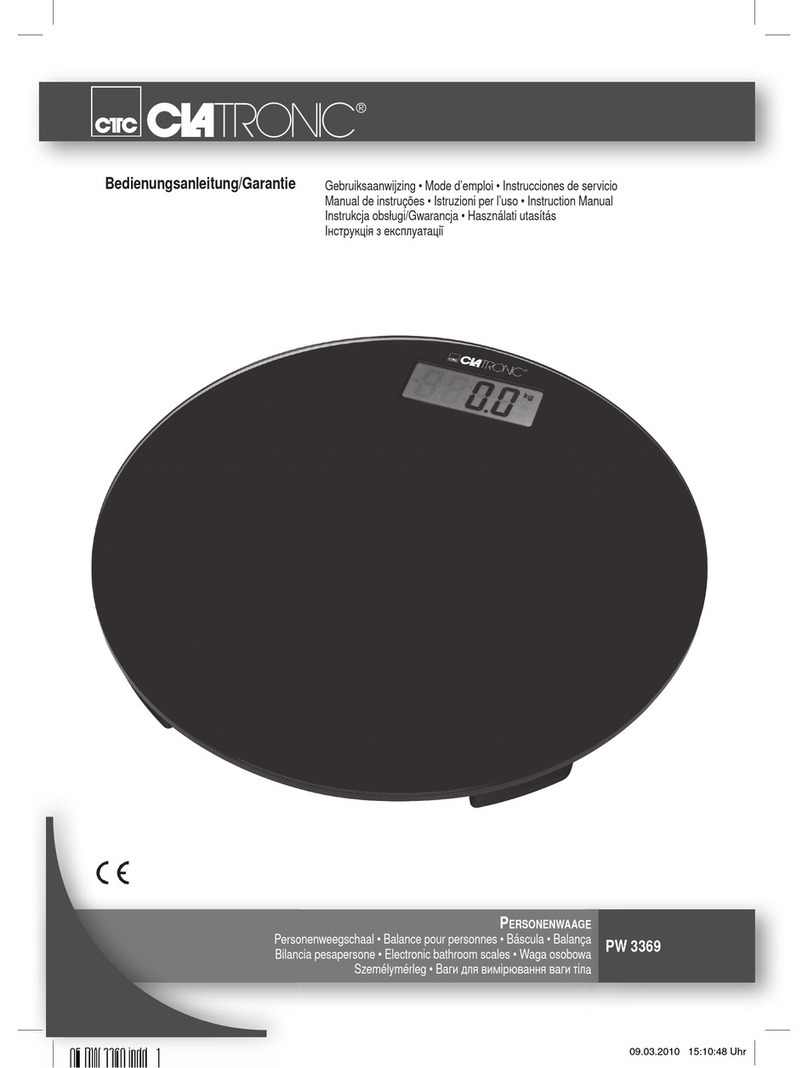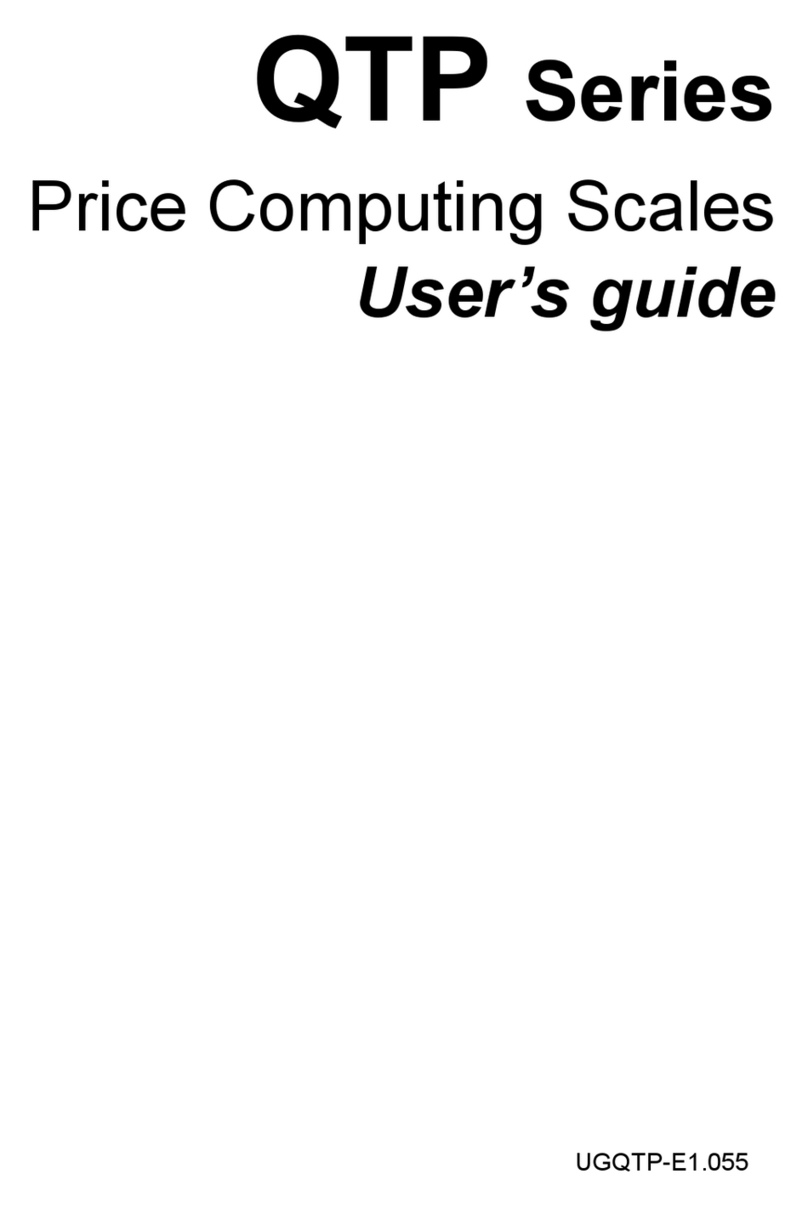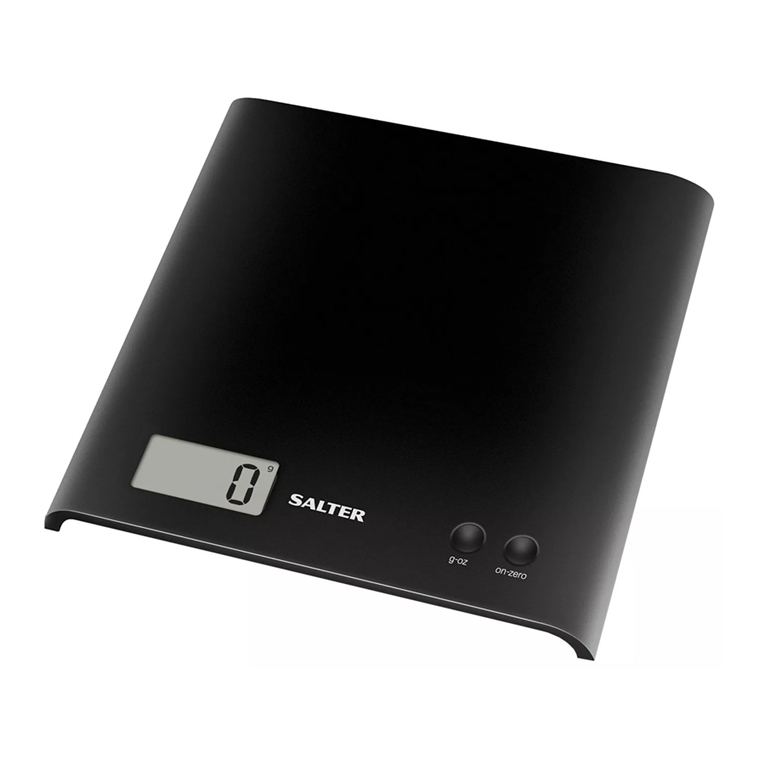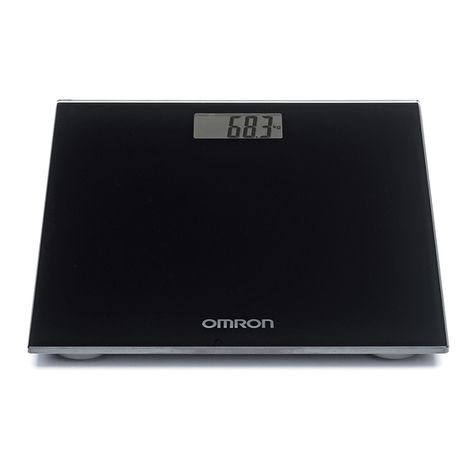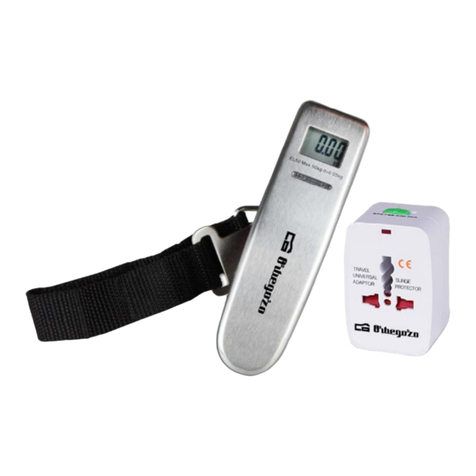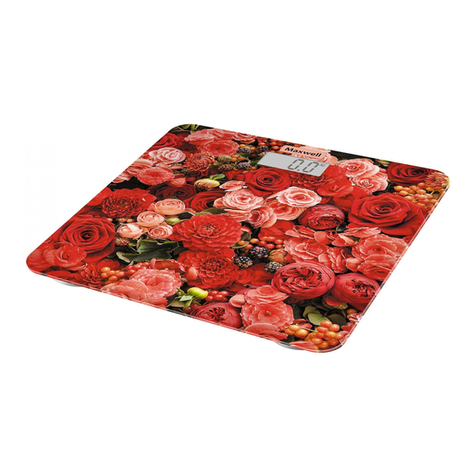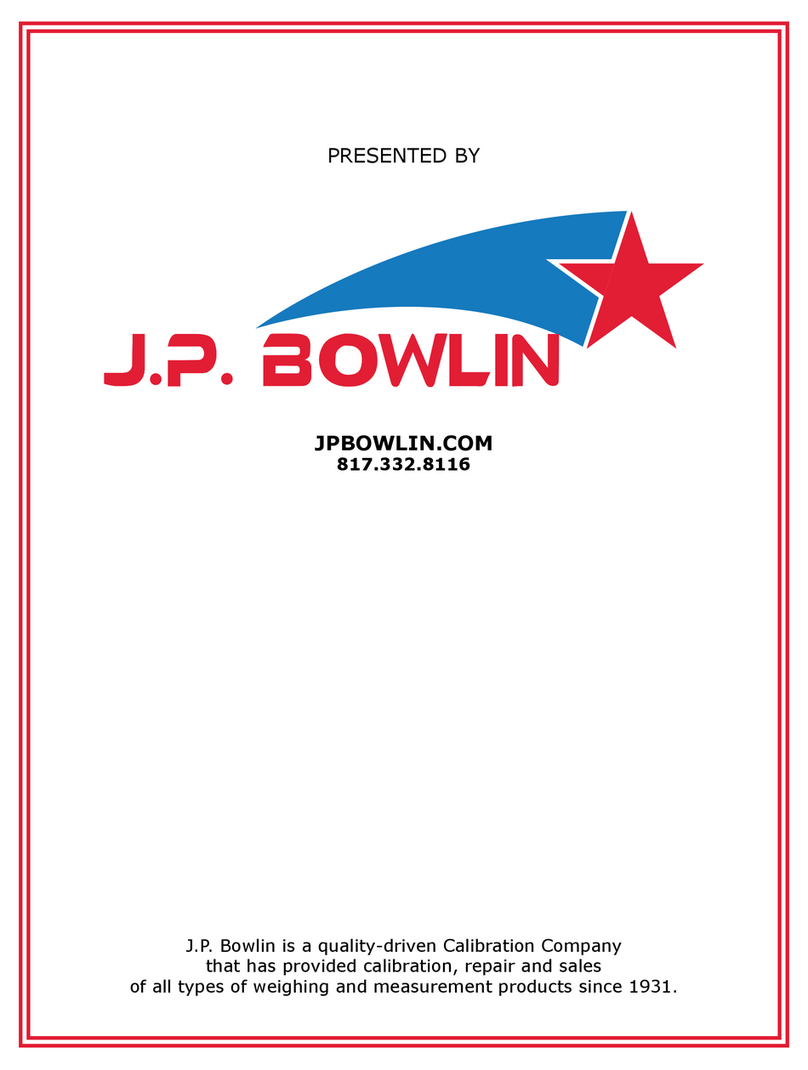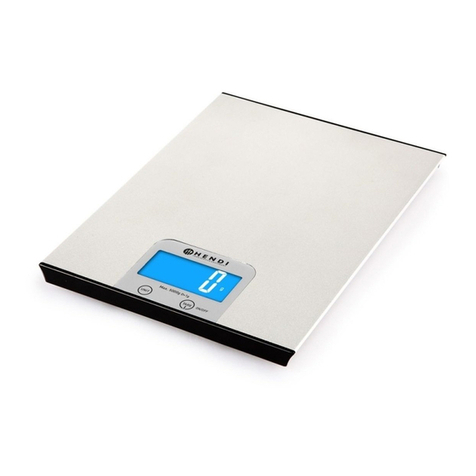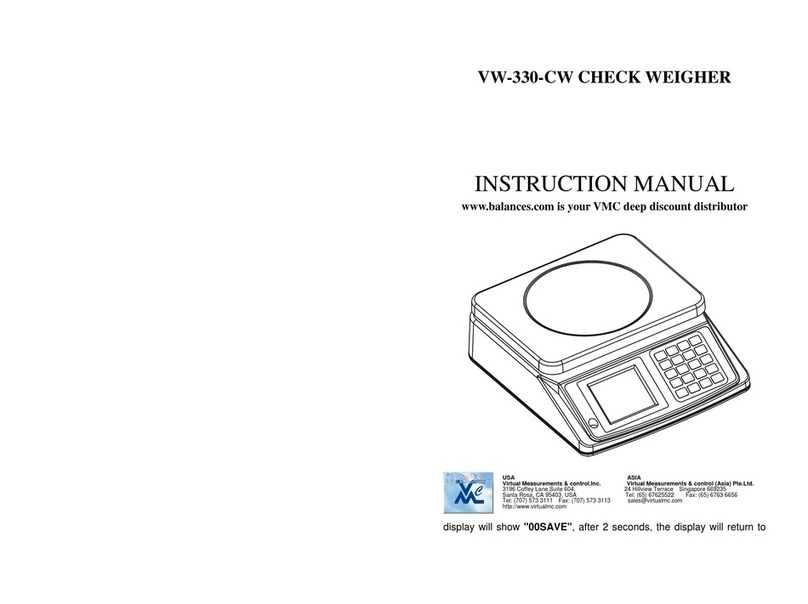Bilancial BTEK DD 700 Setup guide

• DD 700 • DD 700ic • DD 700i
Models Include:

2
ADVANCED USE MANUAL DD700
CONTENTS
1PREMISE FOR THE ADVANCED USER MANUAL.....................................................................5
1.1 Legend The following manual applies to operations present in different models defined at time of
purchase. Below the notation in this manual......................................................................................5
2COMMUNICATION PROGRAMMING ON SERIAL LINES..........................................................6
2.1 Symbols.............................................................................................................................................6
2.2 Strings................................................................................................................................................6
2.2.1 Cb (or Bilanciai) string.........................................................................................................7
2.2.2 Extended String...................................................................................................................7
2.2.3 Visual String ........................................................................................................................9
2.2.4 Idea String...........................................................................................................................9
2.2.5 Cma.....................................................................................................................................9
2.2.6 On request with address....................................................................................................10
2.2.7 Customised string..............................................................................................................10
2.2.8 Checkweight string (**)......................................................................................................10
2.2.9 CW String (**)....................................................................................................................11
2.2.10 Piece Number String(**)....................................................................................................12
2.2.11 Printed data string .............................................................................................................13
2.2.12 Pfister String (*)(***)...........................................................................................................19
2.2.13 Sasco String (*)(***)...........................................................................................................19
2.2.14 Weightronic String (*)(***)..................................................................................................19
2.2.15 NTEP/ Btek (*)(***) ............................................................................................................19
2.2.16 Cardinal String (*)(***) .......................................................................................................20
2.2.17 Cardinal 748P String (*)(***)..............................................................................................21
2.2.18 Alsale String (*)(***)...........................................................................................................21
2.2.19 Globalw String (*)(***)........................................................................................................21
2.2.20 Bran Luebbe String (*)(***) ................................................................................................21
2.2.21 Extraction String (*)(***).....................................................................................................22
2.2.22 RTU Modbus(OPTIONAL).................................................................................................23
2.3 Protocol for cyclical strings ..............................................................................................................27
2.3.1 Protocol for cyclical strings................................................................................................27
2.3.2 Cyclical protocol ................................................................................................................27
2.3.3 On request protocol...........................................................................................................27
2.4 Remote command protocols............................................................................................................27
2.4.1 Response times.................................................................................................................28
2.4.2 Remote commands in the version for terminal with multiple scales...................................29
2.4.3 Response to incorrect command.......................................................................................29
2.4.4 Response to correct command..........................................................................................29
2.4.5 Suspending cyclical transmission......................................................................................29
2.4.6 Re-activating cyclical transmission....................................................................................29
2.4.7 Gross weight request.........................................................................................................29
2.4.8 Net weight request.............................................................................................................29
2.4.9 Tare transmission request.................................................................................................30
2.4.10 Scale status transmission request.....................................................................................30
2.4.11 Scale status transmission request (EV2001 version) ........................................................31
2.4.12 Scale reset ........................................................................................................................31
2.4.13 Tare acquisition.................................................................................................................31
2.4.14 Entering a tare...................................................................................................................31
2.4.15 Deleting an entered tare....................................................................................................31
2.4.16 General data table request................................................................................................32
2.4.17 Identified general data request..........................................................................................32
2.4.18 "y" value setting request in the general data identified by "n"............................................32
2.4.19 Net weight and scale status transmission request.............................................................32
2.4.20 6-byte net weight and scale status transmission request ..................................................32
2.4.21 6-byte net weight and tare and scale status transmission request ....................................33
2.4.22 Print request......................................................................................................................33
2.4.23 Reading of last acquired weight ........................................................................................33
2.4.24 Erasing the last weight acquired........................................................................................33
2.4.25 Division value request .......................................................................................................34
2.4.26 Net weight request in high resolution.................................................................................34
2.4.27 Request maximum capacity value.....................................................................................34
2.4.28 Request net weight without unit of measurement..............................................................34
2.4.29 Conversion Value..............................................................................................................34

3
ADVANCED USE MANUAL DD700
2.4.30 Keyboard and display lock.................................................................................................34
2.4.31 Keyboard and display unlock.............................................................................................34
2.4.32 Keyboard lock....................................................................................................................35
2.4.33 Keyboard unlock................................................................................................................35
2.4.34 Command to change current unit of measurement (if secondary unit of measurement is
managed).........................................................................................................................................35
2.4.35 Remote commands with checksum...................................................................................35
2.4.36 Remote commands with addressing..................................................................................35
2.5 Remote commands for Input/Output management..........................................................................36
2.5.1 Setting a single output.......................................................................................................36
2.5.2 Resetting a single output...................................................................................................36
2.5.3 Testing a single output ......................................................................................................37
2.5.4 Testing a single input.........................................................................................................37
2.5.5 Testing all outputs .............................................................................................................38
2.5.6 Change the status of all outputs........................................................................................38
2.5.7 Testing all inputs................................................................................................................39
2.6 CW remote commands associated to the CW serial string (**)........................................................40
2.6.1 Scale reset ........................................................................................................................40
2.6.2 Deleting an entered tare....................................................................................................40
2.6.3 Deleting the Top Limit of the weighing range ....................................................................40
2.6.3 Deleting the Bottom Limit of the weighing range...............................................................40
2.6.5 CW string transmission request.........................................................................................40
2.6.6 Current range transmission request ..................................................................................41
2.6.7 Scale status transmission request.....................................................................................41
2.6.8 Weight transmission request .............................................................................................41
2.6.9 Product code transmission request ...................................................................................41
2.6.10 Top Limit transmission Request ........................................................................................42
2.6.11 Bottom Limit transmission Request...................................................................................42
2.6.12 Tare transmission request.................................................................................................42
2.6.13 Top limit list transmission request......................................................................................43
2.6.14 Bottom limit list transmission request ................................................................................43
2.6.15 Tare list transmission request............................................................................................43
2.7 Remote commands for digital cells..................................................................................................44
2.7.1 Cell point request...............................................................................................................44
2.7.2 Cell temperature request...................................................................................................44
2.7.3 Cell software version and release request.........................................................................44
2.7.4 Power supply request........................................................................................................44
2.7.5 Cell serial number numbers request..................................................................................44
2.7.6 Angle calibration coefficient request..................................................................................44
2.7.7 System cell number request..............................................................................................45
2.7.8 Cell status request.............................................................................................................45
2.7.9 Digital scale status request................................................................................................46
2.8 Communication in MPP mode .........................................................................................................47
2.8.1 Operation...........................................................................................................................47
2.8.2 Weighing request from key with data transmission at end of operation.............................47
2.8.3 Weighing operation request from serial command with transmission at end of operation.49
2.8.4 Weighing request from key and transmission from serial command..................................50
2.8.5 Weighing and transmission request from serial command................................................50
2.8.6 MP and MC remote commands with checksum.................................................................50
3CUSTOMISATION.......................................................................................................................51
3.1 Foreword..........................................................................................................................................51
3.2 Entering parameter configuration.....................................................................................................51
3.3 Language.........................................................................................................................................51
3.4 Setup Menu .....................................................................................................................................51
3.4.1 Conditional Menu...............................................................................................................51
3.4.2 Entering numerical data.....................................................................................................51
3.4.3 Entering alphanumerical data............................................................................................51
3.4.4 Entered data validation......................................................................................................51
3.4.5 NON-EDITABLE parameter or menu.................................................................................52
3.4.6 NOT AVAILABLE parameter or menu...............................................................................52
3.5 Overall view of the menu tree..........................................................................................................53
3.6 Descriptions of main menus and parameters...................................................................................55
3.6.1 Setup Menu/Scale/Configurations/Metrological.................................................................55
3.6.2 Setup Menu/Scale/Configurations/General .......................................................................55
3.6.3 Setup Menu/ANALOGUE scale/Configurations/Secondary scale......................................56

4
ADVANCED USE MANUAL DD700
3.6.4 Setup Menu/ANALOGUE scale/Analogue scale parameters ............................................56
3.6.5 Setup Menu/Scale/Sampling/View data.............................................................................56
3.6.6 Setup Menu/DIGITAL Scale ..............................................................................................56
3.6.7 Setup Menu/Scale/Test.....................................................................................................56
3.6.8 Setup Menu/Customisation/Operating modes...................................................................57
3.6.9 Setup Menu/Customisation/Operating modes/Printer/Model.............................................62
3.6.10 Setup Menu/Customisation/Operating Modes/Printer/Port................................................67
3.6.11 Setup Menu/Customisation/Operating modes/Printer/Printouts ........................................67
3.6.12 Setup Menu/Customisation/Operating modes/MPP Mode ................................................68
3.6.13 Setup Menu/Customisation/Operating modes/Signal Light management (OPTIONAL) ....68
3.6.14 Setup Menu/Personalizations/Operating modes/Weighing/Management Weighing CSV..69
3.6.15 Setup Menu/Customisation/Outputs/Serial/Com xy...........................................................69
3.6.16 Setup Menu / Customisation / Outputs / Serial / String /.../ Com xy configuration.............71
3.6.17 Setup Menu/Customisation/Outputs/Input-Output.............................................................72
3.6.18 Setup Menu/Customisation/Outputs/Analogue Outputs(OPTIONAL)................................73
3.6.19 Setup Menu/Customisation/Messages..............................................................................73
3.6.20 Setup Menu/Customisation/Hotkeys..................................................................................74
3.6.21 Setup Menu/Customisation/Keys.......................................................................................75
3.6.22 Setup Menu/Customisation/Archives.................................................................................75
3.6.23 Setup Menu/Customisation/Custom. Print.-Transm. in memory (**)..................................76
3.6.24 Setup Menu/Customisation/Backup-Restore.....................................................................81
3.6.24 Setup Menu/Customisation/Display...................................................................................81
3.7 Test procedures...............................................................................................................................83
3.7.1 Terminal Test/Serial ports .................................................................................................83
3.7.2 Terminal Test/Input-Output................................................................................................83
3.7.3 Terminal Test/Keyboard....................................................................................................83
3.7.4 Terminal Test/Terminal configuration report......................................................................83
3.7.5 Terminal Test/Terminal customisation report ....................................................................84
3.7.6 Analogue Terminal/Output Test.........................................................................................85
3.7.7 Terminal/Battery Test........................................................................................................85
3.7.8 Modbus-RTU.....................................................................................................................85
3.7.9 Fieldbus board...................................................................................................................85
3.7.10 FTDI device.......................................................................................................................85
3.8 Weight repeater...............................................................................................................................86
3.8.1 Setup Menu/Repeater scale/Repeater scale parameters/Serial port/xy com ....................86
3.8.2 Setup Menu/Repeater scale/Repeater scale parameters/String........................................87
4DD700 FIRMWARE UPGRADE..................................................................................................89
5CUSTOMIZATION VALID ONLY FOR NTEP TERMINALS.......................................................90

5
ADVANCED USE MANUAL DD700
1 PREMISE FOR THE ADVANCED USER MANUAL
This manual is dedicated to customising the terminal to adapt it to the weighing system that it is part
of. It also contains descriptions of software controls to interface with
PCs, PCLs and hosts in general.
WARNING
Customisation does not affect the weighing functions in any way, however, if not implemented
correctly they can jeopardise operation of the entire system. Only use qualified and expert
technicians to modify the functions described in this section.
1.1 Legend
The following manual applies to operations present in different models defined at time of purchase.
Below the notation in this manual.
*
Model "1" operation: Single weighing, Sum weighing, Double
weighing, Loading extraction, Unloading extraction and double
weighing.
**
Model “2” operation: standard, Sum weighing, piece counter,
manual selector, Weighing check and Multi operator.
***
Model "3" model see "1" with selection management scale "A" or
"B" to the exclusion.
If you do not specify anything, it means present in all models.

6
ADVANCED USE MANUAL DD700
2 COMMUNICATION PROGRAMMING ON SERIAL
LINES
2.1 Symbols
The symbols employed to describe the characters on serial line are provided below.
Normal characters are described by simply providing their symbol.
Control characters are between brackets and expressed in capital letters.
For ex.:
<CR> stands for carriage return.
<SP> stands for the space character.
<SOH> marks the character at the start of commands for CW(**) strings
<STX> marks the character at the start of responses for CW (**)strings
<EOL> marks the character at the end of responses for CW(**) strings and can be <CR> or <CR>
<LF>.
If necessary the hexadecimal value of the character is provided in numbers and upper case
letters.
For ex.: <CR>(0DH) or $(24H).
The variables are provided in lower case in brackets.
For ex.:
<um>=unit of measurement of weight. This can be in the values:
<SP>g = grammes, g= grammes for weight check strings(**) kg = kilogrammes
<SP>t = tonnes, t = tonnes for weight check strings(**)
lb = pounds oz = ounces
With n and y number fields are provided with spaces at the beginning, decimal separator and
minus sign.
2.2 Strings
The terminal has two serial outputs on board plus 2 optional cards that can be used to connect
external devices such as printers, personal computers, PLC and so forth. The user has the
possibility of choosing the type of output protocol from the standard ones provided on the terminal.
The user also has the option of customising data serialisation from the menu.

7
ADVANCED USE MANUAL DD700
2.2.1 Cb (or Bilanciai) string
1st character
$(24H)
string start character
2nd character
<s>
s=stability
s=0 stable weight
s=1 unstable weight
s=3 invalid weight (negative or overload)
3rd-7th character
net weight
if the weight is composed of more than 5 digits,
the least significant ones will not be sent
8th character
<CR>(0DH)
string end character
Available protocols: Cyclical, On request, ACK-NAK.
2.2.2 Extended String
1st character
$(24H)
string start character
2nd-10th character
net weight with sign and any decimal separator
11th character
<SP>(20H)
space
12th-20th character
tare with sign and any decimal
separation
21st character
<SP>(20H)
space
22nd-23rd character
<um>
unit of measurement
24th character
<SP>(20H)
space
25th character
<s1>
scale status
26th character
<s2>
scale status
27th character
<s3>
scale status
28th character
<s4>
scale status
29th character
<CR>(0DH)
30th character
<LF>(0AH)
Characters such as <s1>, <s2>, <s3>, <s4> are ASCII characters that must be interpreted as
hexadecimals. Each character represents
4 bits with different meanings, for example incoming ASCII character "A"
must be interpreted as hexadecimal digit "A";
1 0 1 0
Bit3 bit2 bit1 bit3

8
ADVANCED USE MANUAL DD700
When a bit has a value of "1" this means that the corresponding signal is in the true condition; the
meaning of the signals is as follows:
<s1>
bit 0
minimum weighing operation signal
bit 1
blocked tare signal
bit 2
preset(1)/self-weighing(0) tare signal
bit 3
"center zero" signal
<s2>
bit 0
LSB weighing extension signal (only
ME)
bit 1
stable weight signal
bit 2
overload signal
bit 3
MSB weighing extension signal (only
ME)
<s3>
bit 0
entered tare signal
bit 1
deleted blocked tare signal (only
ME)
bit 2
invalid weight
bit 3
printing in progress
<s4>
bit 0
approved instrument
bit 1
failed converter
bit 2
error on scale configuration parameters
bit 3
not used
Available protocols: Cyclical, On request, ACK-NAK, With remote commands.

9
ADVANCED USE MANUAL DD700
2.2.3 Visual String
1st character
$(24H)
string start character
2nd character
0(30H)
fixed zero character
3rd character
<s>
s=stability
s=0 stable weight
s=1 unstable weight
s=3 invalid weight (negative
or overload)
4th-8th
character
net weight with sign;
if the weight is composed of
more than 5 digits, the least
significant ones will not be sent;
if there is a decimal separator, the
overall string length increases by 1
character
9th character
<CR>(0DH)
string end character
2.2.4 Idea String
1st character
<cis>
cis=@(40H)
String start character when
key pressed
cis=$(24H)
String start character in other
cases
2nd character
<s>
s=stability
s=0 stable weight
s=1 unstable weight
s=3 invalid weight (negative or
overload)
3rd-7th
character
net weight
if the weight is composed of more
than 5 digits, the least significant
ones will not be sent
8th character
<CR>(0DH)
string end character
2.2.5 Cma
Reserved string not for use. Additional information provided with job order.

10
ADVANCED USE MANUAL DD700
2.2.6 On request with address
By selecting this option cyclical string transmission is disabled.
Remote commands are used followed by the terminal identification number.
2.2.7 Customised string
It is possible to customise the composition of the string directly from the terminal or using the
"Dialogic" program.
In the latter case, contact the Manufacturer for information.
2.2.8 Checkweight string (**)
The “Verifica Peso” (checkweight) string can only be selected in Verifica Peso/(checkweight) mode,
and can have a length varying between 18 and 21 characters.
This variation depends on:
the unit of measurement used to express the weight: if it is expressed with g or t, the unit of
measurement in the string only occupies one character, if it is expressed in kg, oz or lb the unit
of measurement occupies two characters;
type of protocol: if it is cyclical, there is a weight qualification character (unstable, overload, valid
and stable).
For simplicity, only the example of the checkweight string comprised of 21 characters is provided
below, where the weight is expressed in kg, oz or lb and the protocol is cyclical.

11
ADVANCED USE MANUAL DD700
1st character
<STX> (02H)
2nd character
<SP> (20H)
or <->
Space if the weight is positive
Minus sign if the weight is negative
3rd-9th
character
weight
10th character
<SP> (20H)
space
11th-12th
character
<um>
unit of measurement (kg, oz or lb)
As explained above, if the weight is
expressed in g or in t, the unit
of measure of the string only
occupies one
character (10th), subsequently the
numbering of the following
characters decreases by one unit.
13th-14th
character
<GR> or
<NT>
GR = gross weight
NT = net weight
15th-18th
character
<OVER> or
<ACPT> or
<UNDR>
OVER = OVER ACPT = WITHIN
UNDR = UNDER
19th character
<M> or
<R> or
<SP> (20H)
M = unstable weight
R = overload
SP = valid and stable weight. This
character is only there if the
protocol is cyclical, in all other
cases the numbering of the
following characters drops by
one unit.
20th character
<CR> (0DH)
21th character
<LF> (0AH)
2.2.9 CW String (**)
The CW string can only be selected in Verifica Peso/(checkweight) mode, and can have a length
varying between 15 and 17 characters.
This variation depends on:
the unit of measurement used to express the weight: if it is expressed with g or t, the unit of
measurement in the string only occupies one character, if it is expressed in kg, oz or lb the unit
of measurement occupies two characters;
type of protocol: if it is cyclical, there is a weight qualification character (unstable, overload, valid
and stable).
For simplicity, only the example of the CW string comprised of 17 characters is provided below,
where the weight is expressed in kg, oz or lb and the protocol is cyclical.

12
ADVANCED USE MANUAL DD700
1st character
<STX> (02H)
2nd character
<SP> (20H)
or <->
Space if the weight is positive
Minus sign if the weight is negative
3rd-8th character
weight
9th character
<SP> (20H)
space
10th-11th character
<um>
unit of measurement (kg, oz or lb) As explained
above, if the weight is expressed in g or in t, the
unit
of measure of the string only occupies one
character (10th), subsequently the numbering of
the following characters decreases by one unit.
12th-13th character
<GR> or
<NT>
GR = gross weight
NT = net weight
14th character
<O> or
<A> or
<U>
O = OVER
A = ACCEPT U = UNDER
15th character
<M> or
<R> or
<SP>
M = unstable weight
R = overload
SP = valid and stable weight. This character is
only there if the protocol is cyclical, in all other
cases the numbering of the
following characters drops by
one unit.
16th character
<CR> (0DH)
17th character
<LF> (0AH)
2.2.10 Piece Number String(**)
The Piece Number String can only be selected in “Contapezzi” (piece count) mode.
1st character
$ (24H)
string start character
2nd-7th
character
number of pieces
8th character
<CR> (0DH)
string end character

13
ADVANCED USE MANUAL DD700
2.2.11 Printed data string
This string can be enabled as an alternative to "CSV weighed Management" (Setup \
Personalizations\Operating Mode\ Weighing \ Management Weighing CSV).
There are 3 possible data transmission modes:
Single
The string is sent, then the data is printed.
On request, ACK-NAK, and With remote commands are the available protocols. If the ACK-NAK
protocol is selected and there is a transmission failure, "DATI NON TRASMESSI" (DATA NOT
SENT) will appear at the bottom of the printout.
Spool
The data is printed, then the string is sent. ACK-NAK is the only available protocol.
If there is a string transmission failure, instead of sending it, it is saved in an archive. Every time a
weighing operation is sent, the strings in queue in the archive will be sent first, followed by the string
relative to the current operation.
Archive
Following the weighing operation, the strings are saved in an archive. Transmission is carried out
through the command (<ENQ> (05H)). On request and ACK-NAK are the available protocols.

14
ADVANCED USE MANUAL DD700
Description string printed data, length 106 characters relative to operations (*)(***): standard, piece
count, checkweight and manual selector.
1st character
$ (24H)
string start character
2° - 3° character
Type string
4° - 13° character
date
14° - 21° character
time
22° - 27° character
progressive
28° - 33° character
product code
34° - 53° character
product description
54° - 61° character
generic code
62° - 67° character
result
68° - 79° character
Gross
80° - 91° character
tare weight or initial (if functioning extraction)
92° - 103° character
Net or extract (if functioning extraction)
104° - 105° character
checksum
106° character
<CR> (0DH)
string end character
Description string printed data, length 107 characters(duplex) relative to operations (*)(***):
standard, piece count, checkweight and manual selector.
1st character
$ (24H)
string start character
2° - 3° character
Type string
4° - 13° character
date
14° - 21° character
time
22° - 27° character
progressive
28° - 33° character
product code
34° - 53° character
product description
54° - 61° character
generic code
62° - 67° character
result
68°
A o B
Letter selected Scale
69° - 80° character
Gross
81° - 92° character
tare weight or initial (if functioning extraction)
93° - 104° character
Net or extract (if functioning extraction)

15
ADVANCED USE MANUAL DD700
105° - 106° character
checksum
107° character
<CR> (0DH)
string end character
Description string printed data, length 234 characters relative to operations (*)(***): double weight.
1° character
$ (24H)
string start character
2° - 3° character
Type string
4° - 13° character
Data input
14° - 21° character
hour input
22° - 31° character
Data output
32° - 39° character
hour output
40° - 45° character
Progressive input
46° - 51° character
Progressive output
52° - 57° character
Product Code input
58° - 77° character
Description code input
78° -83° character
Product Code output
84° -103° character
Description code output
104°-111° character
Client Code input
112°-131° character
Description cliente input
132°-139 character
Client Code output
140°-159° character
Description cliente
160°-169° character
Plate input
170°-179° character
Plate output
180°-185° character
Result
186°-195° character
RCD
196°-207° character
Weight input
208°-219° character
Weight uscita
220°-231° character
Net Weighing
132°-233° character
checksum
234° character
<CR> (0DH)
string end character

16
ADVANCED USE MANUAL DD700
Description string printed data, length 235 characters (duplex) relative to operations (*)(***):
double weight.
1° character
$ (24H)
string start character
2° - 3° character
Type string
4° - 13° character
Data input
14° - 21° character
hour input
22° - 31° character
Data output
32° - 39° character
hour output
40° - 45° character
Progressive input
46° - 51° character
Progressive output
52° - 57° character
Product Code input
58° - 77° character
Description code input
78° -83° character
Product Code output
84° -103° character
Description code output
104°-111° character
Client Code input
112°-131° character
Description cliente input
132°-139 character
Client Code output
140°-159° character
Description cliente
160°-169° character
Plate input
170°-179° character
Plate output
180°-185° character
Result
186°-195° character
RCD
196°
A o B
Letter selected Scale
197°-208° character
Weight input
209°-220° character
Weight uscita
221°-232° character
Net Weighing
133°-234° character
checksum
235° character
<CR> (0DH)
string end character

17
ADVANCED USE MANUAL DD700
Description string printed data, length 133 characters relative to operations (**): standard, piece
count, sum weighing, manual selector and weighing check.
.
1st character
$ (24H)
string start character
2°-11° character
date
12°-19° character
time
20°-25° character
progressive
26°-31° character
product code
32°-51° character
product description
52°-59° character
generic code
60°-71° character
AUW (only for operation in CPE mode)
72°-77° character
number of pieces (only for operation in CPE mode)
78°-79° character
range it belongs to (only for operation in manual
selector mode)
80°-89° character
result
90°-93° character
number of boxes
94°character
A or B
selected scale
95°-106° character
gross (relative to selected scale)
107°-118° character
tare (relative to selected scale)
119°-130° character
net (relative to selected scale)
131°-132° character
checksum
133° character
<CR> (0DH)
string end character

18
ADVANCED USE MANUAL DD700
Description of printed data string relative to multi-operator mode, length 171 characters.
1st character
$ (24H)
string start character
2nd-11th character
date
12th-19th character
time
20th-25th character
progressive
26th-31st character
operator code
32nd-51st character
operator description
52nd-57th character
operator printout number
58th-63rd character
receipt number
64th-69th character
product code
70th-89th character
product description
90th-97th character
generic code
98th-109th charac.
AUW (only for operation in CPE mode)
110th-115th charac.
number of pieces (only for operation in CPE mode)
116th-117th charac.
range it belongs to (only for operation in manual
selector mode)
118th-127th charac.
result
128th-131st charac.
number of boxes
132nd character
A or B
selected scale
133rd-144th charac.
gross (relative to selected scale)
145th-156th charac.
tare (relative to selected scale)
157th-168th charac.
net (relative to selected scale)
169th-170th charac.
checksum
171st charac.
<CR> (0DH)
string end character
If a piece of data is not managed or is empty, a string is sent containing the same number of empty
spaces as the length of the data itself. The printout will only contain the data that is compatible with
the set mode.

19
ADVANCED USE MANUAL DD700
2.2.12 Pfister String (*)(***)
2.2.13 Sasco String (*)(***)
2.2.14 Weightronic String (*)(***)
2.2.15 NTEP/ Btek (*)(***)
The string is only present if NTEP terminal.
The transmission to PC can occur in a cyclic manner or at the end of each weighing operation. The
structure of the strings is:
ST X
Polarity
weight
UM
Type weight
status
CR
LF
1
1
7
1
1
1
1
1
where:
STX : character 02 hexadecimal.
Polarity : 1 character indicating, "less"(2DH) negative weight, “space”(20H) positive weight
weight : 7 digits of weight, with any "spaces" (20H) in the head
unit of measure:1 character “K"(If selected kg)," L "(if selected lb)
type weight : 1 character “G” (If selected gross),”N”( If selected net)
status : 1 character that identifies the “I”(49H) invalid weight, ”O”(4FH) overload, ”M”(4DH)
weight is not stable and “space”(20H) stable weight
CR : character 0D hexadecimal.
LF : character 0A hexadecimal.

20
ADVANCED USE MANUAL DD700
2.2.16 Cardinal String (*)(***)
The string is only present if NTEP terminal.
The transmission to PC can occur in a cyclic manner or at the end of each weighing operation. The
structure of the strings is:
Sign
weight
b
UM
b
M
b
CC
b
[CR]
1
6
1
2
1
1
1
2
1
1
Where:
Sign : ' ' o '-' on whether the weight transmitted is positive or
Weght : Fixed length field (6 characters) with the blank in the head in the case in which the
value of the weight is shorter than 6 digitis
b : blank (space);
UU : Unitoof measure with capital letter (LB, KG, TN);
M : Mode (G= Lordo, N= Netto);
CC : Condition Code:
MO = Weight in moviment;
CZ = Center Zero;
OC = Overload;
BZ = Gross weight less than
CR : character 0D hexadecimal.
This manual suits for next models
2
Table of contents
